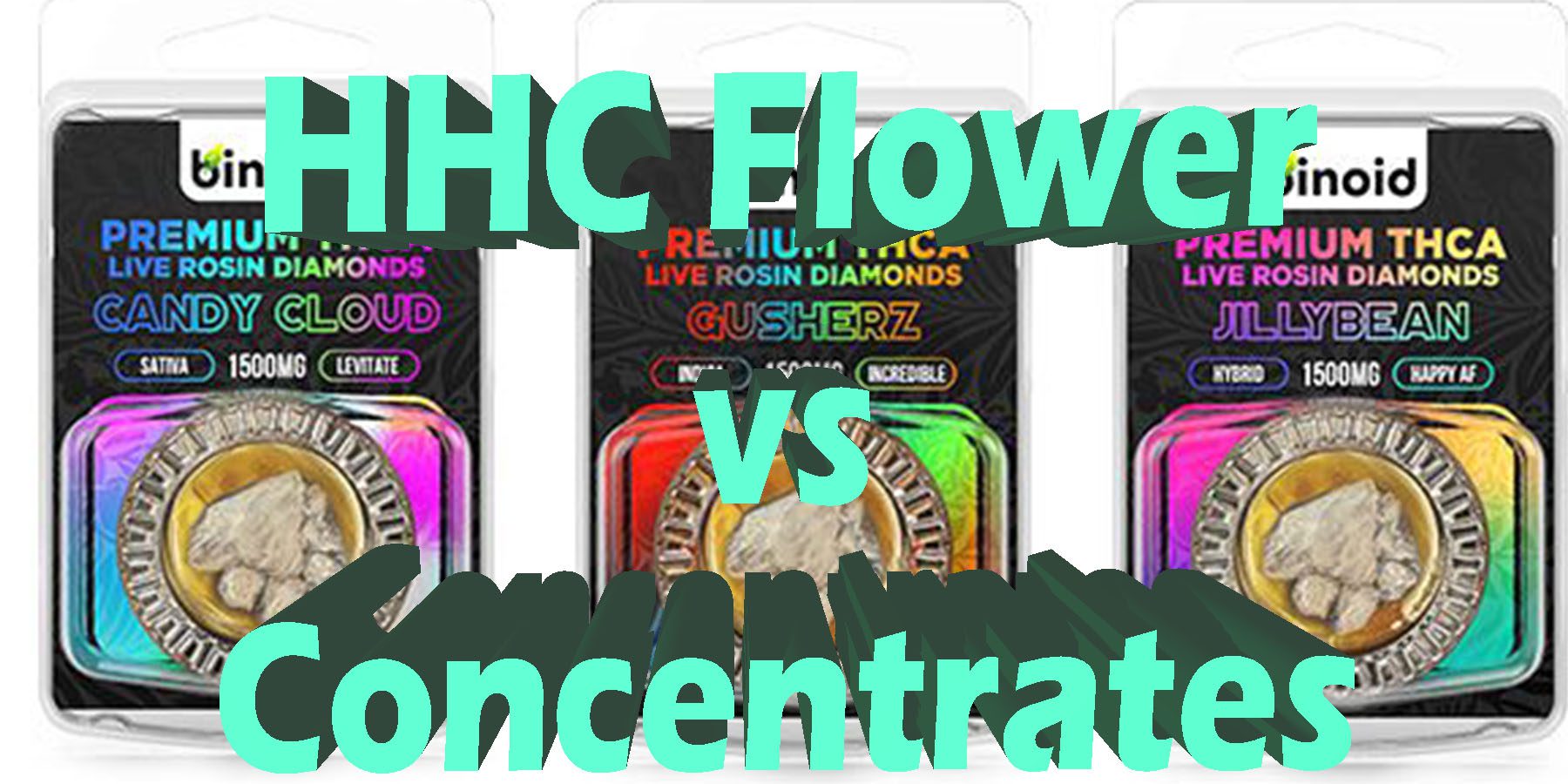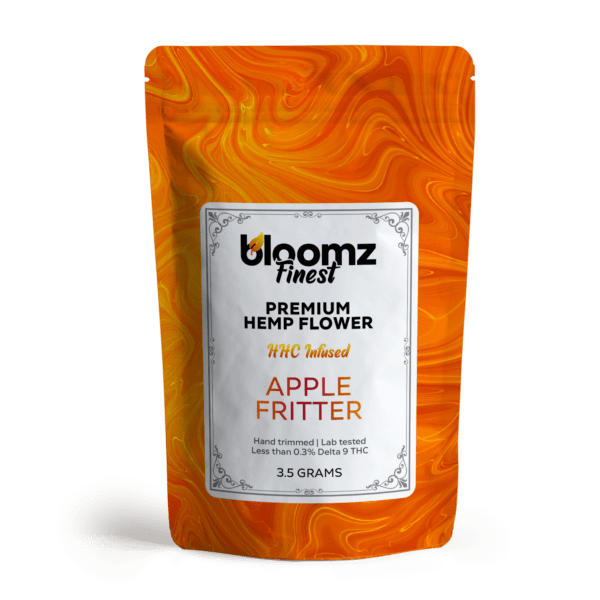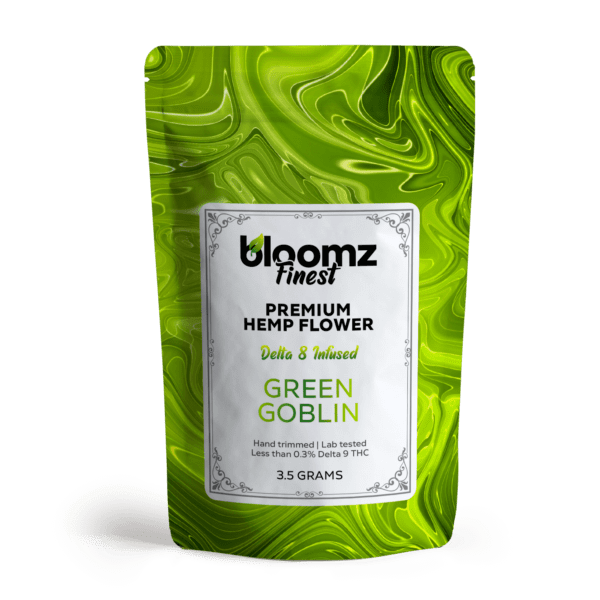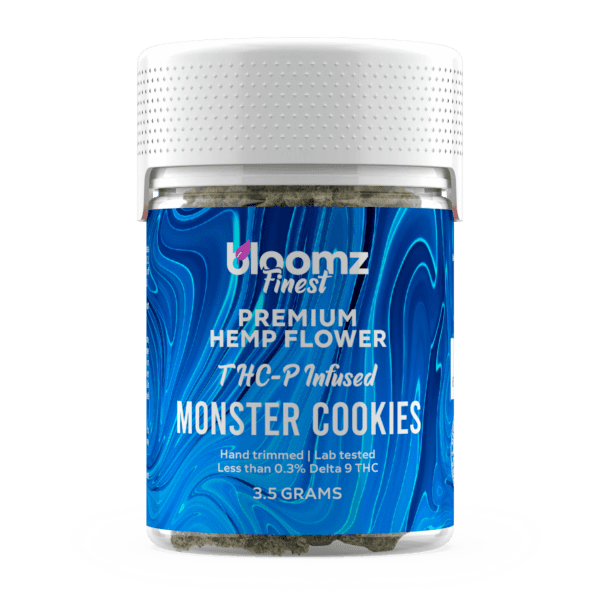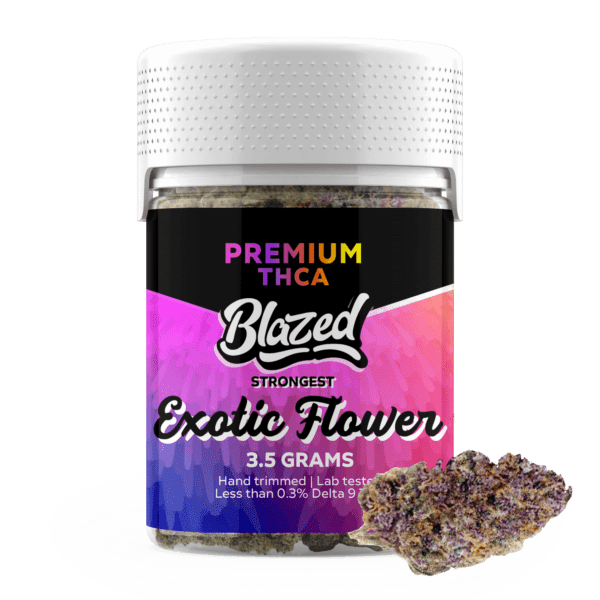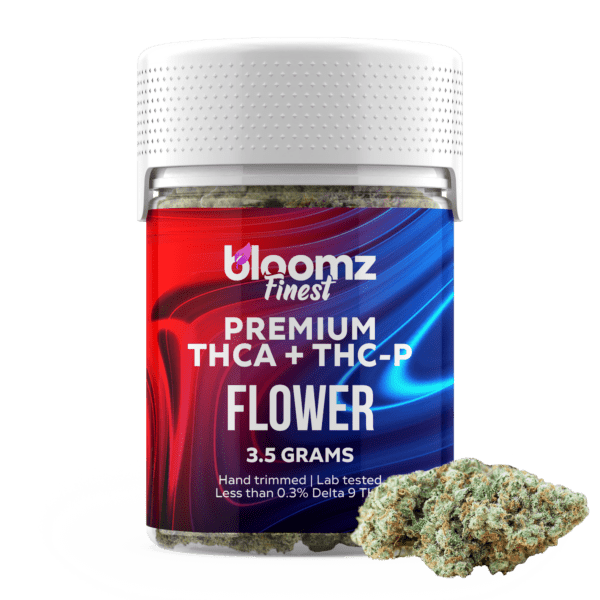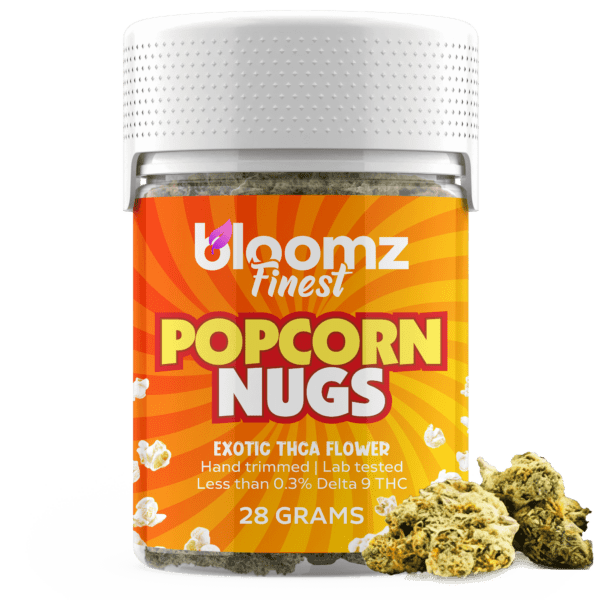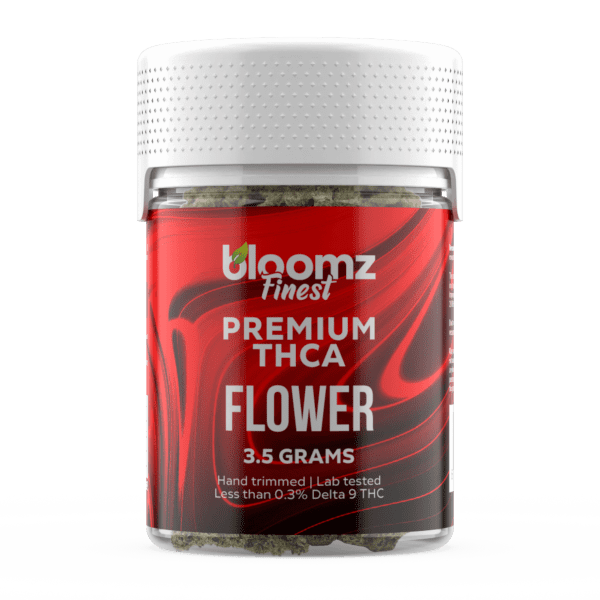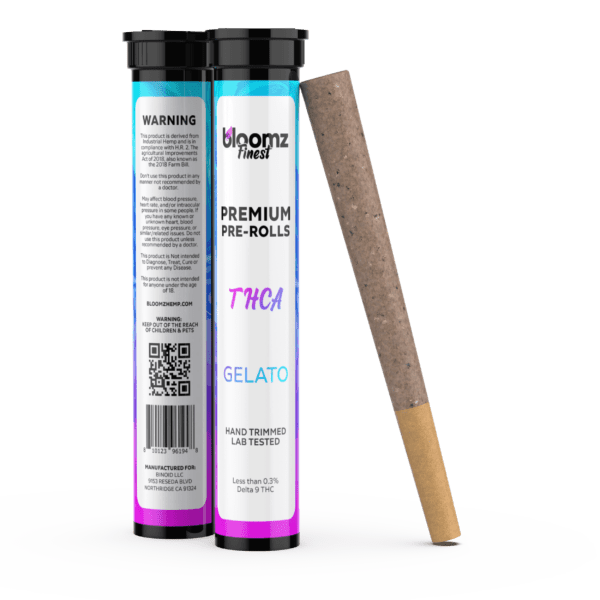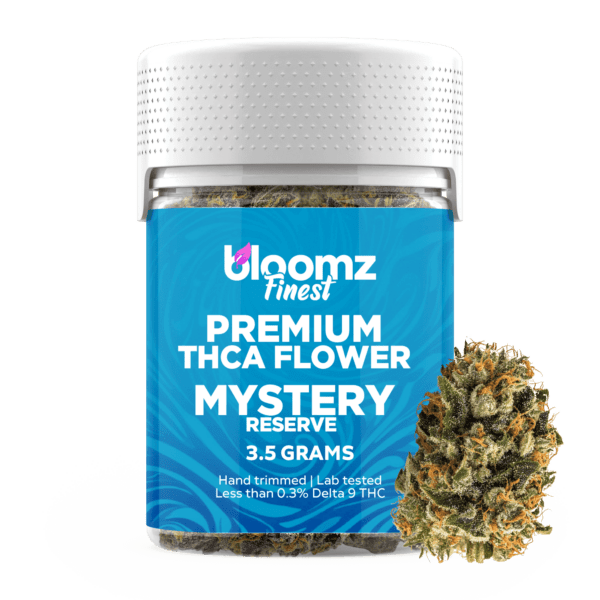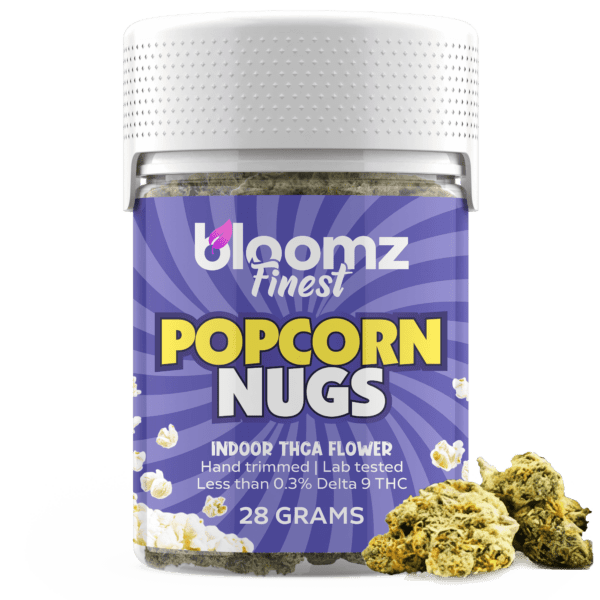The modern cannabinoid frontier is a breathtaking landscape of constant reinvention, where ancient botanical wisdom converges with the relentless pace of scientific discovery. Today’s enthusiast is an explorer, navigating a vibrant and diverse ecosystem filled with products that cater to every imaginable preference, from the subtle and nuanced to the profoundly potent. This dynamic market has given rise to a fascinating dichotomy, a fundamental choice that every consumer must make in curating their own unique journey.
On one side stands the familiar, aromatic allure of HHC flower, representing the timeless tradition of consuming the plant in its most recognizable form. On the other, the gleaming, powerful world of concentrates, a testament to humanity’s ability to refine and amplify nature’s offerings to their absolute peak. This is more than a simple comparison of products; it is a clash of philosophies, pitting the holistic, full-bodied experience of the raw bud against the pure, high-fidelity intensity of its extracted essence.
To Buy HHC Flower Click Here
Recommended products
Why It’s Important to Breakdown the Matchup of HHC Flower vs. Concentrates
Embarking on a detailed comparison between HHC flower and concentrates is a crucial endeavor because these two categories represent fundamentally different paradigms of cannabinoid consumption. While both ultimately deliver the desired compounds to the user, the paths they take to get there are worlds apart, resulting in vastly different rituals, potencies, flavor experiences, and overall effects. A thorough breakdown demystifies these differences, providing consumers with the knowledge to make a conscious and informed choice that truly aligns with their tolerance, lifestyle, budget, and experiential goals.
Understanding this matchup is the key to navigating the modern market with confidence, ensuring that whether one seeks the gentle embrace of the whole plant or the powerful precision of its purified soul, the chosen product is a perfect fit:
-
Understanding the Potency Chasm: The most significant and immediate difference between HHC flower and concentrates is the vast gulf in their potency. HHC flower typically offers a moderate and approachable potency level, making it suitable for a wide range of users, including beginners. Concentrates, by their very definition, are designed to be exceptionally potent, often containing cannabinoid levels that are three to five times higher than even the strongest flower. This chasm in strength has profound implications for the user experience, tolerance development, and cost-per-session. A detailed breakdown is essential to help users respect this difference, enabling them to choose a product appropriate for their experience level and avoid an unpleasantly overwhelming encounter.
-
Contrasting the Consumption Ritual and Hardware Requirements: The rituals and equipment associated with consuming flower versus concentrates are starkly different and appeal to different sensibilities. HHC flower can be enjoyed with simple, accessible tools like a pipe, rolling papers, or a dry herb vaporizer, involving a tactile, hands-on preparation process. Concentrates, particularly “dabbable” ones, require a much more specialized and involved setup, often including a dab rig, a quartz banger, a carb cap, a dab tool, and a butane torch. This can be an intimidating and high-barrier-to-entry process for newcomers. A comparison clarifies these logistical differences, allowing users to choose a method that matches their comfort level with new technology and their willingness to invest in specialized gear.
-
Exploring the Nuances of Flavor and the Entourage Effect: While both product types can be incredibly flavorful, they deliver that flavor in very different ways. HHC flower provides a complex, “full-spectrum” flavor profile derived from the complete suite of compounds in the plant material, including cannabinoids, terpenes, and flavonoids, all working together in what is known as the entourage effect. High-quality concentrates, especially live resin and rosin, are celebrated for their incredibly “clean” and intense terpene expression, offering a high-fidelity snapshot of the plant’s aroma without any of the taste of burning plant matter. Breaking down this matchup helps users decide if they prefer the rustic, full-bodied symphony of flower or the pure, powerful soloist performance of a concentrate.
-
Analyzing Accessibility, Cost, and Long-Term Value: The economics and accessibility of flower and concentrates are important factors in a consumer’s decision. HHC flower is generally more widely available and can be more cost-effective for frequent users when purchased in bulk. Concentrates often have a higher price per gram, but their extreme potency means that a very small amount goes a very long way, which can lead to a lower cost-per-session for experienced users. A detailed analysis is necessary to weigh the initial investment in hardware for concentrates against the long-term bulk savings of flower, helping users determine which option provides the best overall value for their specific consumption habits.
Contender #1: HHC Flower
Stepping into the spotlight as our first contender is the beloved HHC flower, a product that beautifully harmonizes the nostalgic, classic appeal of the raw cannabis bud with the exciting possibilities of modern cannabinoid science. It represents a familiar comfort for many, a direct link to the long-standing traditions of herbal consumption, yet it has been masterfully enhanced to deliver an entirely new and captivating experience. It is important to clarify that HHC flower is not a plant that grows naturally; it is a product of careful craftsmanship and scientific infusion. The journey begins with the meticulous cultivation and selection of premium, federally compliant hemp flower, chosen for its ideal density, rich aromatic profile, and beautiful appearance.
This high-quality botanical foundation is then subjected to a precise process where it is evenly infused or coated with pure, lab-grade Hexahydrocannabinol (HHC) distillate. The final result is a product that is sensorially indistinguishable from traditional high-THC cannabis flower—it has the same look, feel, and fragrant aroma—but it delivers the distinctly smooth, uplifting, and often lucid effects for which HHC is celebrated. HHC flower appeals to the traditionalist at heart, the individual who cherishes the tactile ritual and the full-bodied, authentic flavor that only the whole plant can provide.
Before we can fully appreciate HHC flower, we must first understand the unique molecule that gives it its name and its remarkable character: Hexahydrocannabinol. HHC is a captivating cannabinoid that occupies a unique position in the cannabis world, existing as a semi-synthetic analog of THC. Its genesis dates back to 1944 when the brilliant American chemist Roger Adams first created it in his laboratory. Adams achieved this through a now-famous chemical process called hydrogenation, where he added hydrogen atoms to the molecular structure of Delta 9 THC. This process, chemically similar to how liquid vegetable oil is converted into solid margarine, fundamentally alters the molecule by breaking the double bond in its cyclohexyl ring. This saturation with hydrogen results in HHC, a compound with a remarkably stable structure. While scientists have since discovered that HHC does appear naturally in the cannabis plant, it is only found in minuscule, trace amounts, making natural extraction commercially impossible.
Consequently, the HHC that populates the modern market is produced in a controlled laboratory setting, typically by hydrogenating hemp-derived CBD or THC. This molecular stability is not just a scientific curiosity; it endows HHC with practical advantages, including enhanced resistance to degradation from UV light and heat, translating to a much longer and more stable shelf life. In terms of its effects, users consistently describe the HHC experience as being nestled comfortably between the gentler high of Delta 8 THC and the more robust intensity of Delta 9 THC, offering a potent yet manageable euphoria that is often characterized by its relaxing and lucid nature.
Recommended products
The creation of premium HHC flower is an art form that demands scientific precision, technical skill, and a profound appreciation for the starting botanical material. The objective is far more sophisticated than simply slathering hemp buds with an oil; it is about achieving a deep, uniform infusion that enhances the flower without compromising its natural integrity, aroma, or smokability. This delicate balance is the hallmark of a high-quality product, ensuring that every bud delivers a consistent potency and a smooth, flavorful experience for the end user. This meticulous manufacturing journey can be segmented into several indispensable stages, each one playing a pivotal role in the final quality and character of the HHC flower:
-
Selection and Sourcing of Elite Hemp Flower: The foundation of any great HHC flower is, without question, the raw hemp itself. This initial step is non-negotiable and sets the quality ceiling for the entire process. Expert producers source their flower from boutique hemp farms that specialize in growing federally compliant, low-THC cannabis. They select specific strains that exhibit desirable characteristics: dense, hand-trimmed buds, a high concentration of crystalline trichomes, and, most critically, a robust and appealing terpene profile. The flower must also be perfectly cured, a process of slowly drying the buds to achieve the ideal moisture content for preservation, flavor development, and a smooth burn.
-
Preparation and Viscosity Reduction of HHC Distillate: In parallel, the HHC distillate is prepared for application. In its raw form, HHC distillate is an extremely thick, sticky, and unworkable semi-solid, similar in consistency to cold honey. To apply it evenly, its viscosity must be significantly reduced. This is typically achieved by gently heating the distillate in a laboratory-grade vessel. For some application methods, the heated distillate may be lightly blended with natural, terpene-based solvents to make it even more fluid, though many premium brands pride themselves on developing solventless application techniques to maintain the utmost purity.
-
The Meticulous Infusion Process: This is the core stage where the hemp flower is transformed. The most common method involves placing the cured hemp buds into a large, specialized tumbler or mixer. The warmed, fluid HHC distillate is then introduced through a fine spray nozzle while the buds are gently agitated. This ensures that every surface of every bud receives a light, even coating. A more advanced technique, known as vacuum infusion, involves placing the flower in a sealed chamber, removing the air to open the plant’s pores, and then introducing the distillate, which allows for deeper penetration into the bud itself. The goal is to avoid oversaturation, which creates a harsh-smoking, messy product.
-
Post-Infusion Curing and Stabilization: After the HHC distillate has been successfully applied, the infused buds are not yet ready for packaging. They must undergo a crucial secondary curing process. The coated flower is spread out in thin layers on drying racks in a climate-controlled room. This stage allows the distillate to fully permeate the flower and for the bud to return to a stable, non-tacky state. If any carrier agents were used, this curing process ensures they fully and safely evaporate, leaving behind only the pure HHC and the natural flower.
-
Third-Party Laboratory Verification and Final Inspection: Before a single bud is sold, the entire batch must pass a stringent quality control protocol. A representative sample is sent to an independent, third-party laboratory for comprehensive analysis. This testing, presented in a Certificate of Analysis (COA), verifies the HHC potency, confirms that the Delta 9 THC level is below the 0.3% federal limit, and screens for a full panel of potential contaminants, including pesticides, heavy metals, microbial life, and residual solvents. This final step provides critical transparency and ensures the safety and compliance of the product for the consumer.
The universe of HHC flower is wonderfully diverse, offering a rich tapestry of options designed to cater to every type of consumer and every conceivable preference. This variety is a testament to the creativity of the industry, ensuring that no matter your consumption style—whether you are a connoisseur focused on terpene profiles, a pragmatist seeking maximum value, or a potency hunter chasing the most intense experience—there exists a specific format of HHC flower crafted with you in mind. Each category possesses unique traits, influenced by everything from the initial cultivation methods of the base hemp to the intricate post-harvest enhancements that amplify its effects. Delving into these different types allows for a truly customized journey:
-
Indoor HHC Flower: This represents the zenith of craft and precision in hemp cultivation. Grown entirely indoors, these plants live in a perfectly optimized environment where every element is controlled with scientific accuracy. Growers can manipulate light cycles and spectrums, fine-tune humidity and temperature, and deliver nutrient-rich water directly to the roots. This meticulous oversight allows the plant to achieve its full genetic potential, resulting in flawlessly structured, exceptionally dense buds that are blanketed in a thick layer of frosty trichomes. When these A-grade flowers are infused with HHC, they produce a top-shelf product renowned for its incredibly complex aromas, rich flavors, and an impeccably smooth smoking experience, making it the gold standard for aficionados.
-
Outdoor HHC Flower: Cultivated as nature intended, under the open sky and bathed in natural sunlight, outdoor-grown hemp flower possesses a distinct and hearty character. These plants develop a resilience and robustness from interacting with the elements. The full, unfiltered spectrum of the sun and the unique mineral composition of the soil (the “terroir”) contribute to the development of substantial buds with deep, earthy, and often fruity terpene profiles. While they may have a more rugged, less manicured appearance than their indoor counterparts, high-quality outdoor HHC flower offers a classic, powerful, and deeply satisfying experience. It is also typically more affordable, making it a stellar choice for regular users who value a natural product and a great price point.
-
HHC Small Buds: A savvy consumer’s best friend, HHC small buds deliver the same potent punch as premium flower but at a more accessible price. These are not inferior in quality; they are simply smaller nugs, often called “popcorn buds,” that are either harvested from the lower branches of the hemp plant or are sorted out from the larger, top-shelf colas during the trimming phase. They undergo the same careful HHC infusion process and contain the same rich profile of cannabinoids and terpenes as the larger buds. This makes them an outstanding value proposition for frequent consumers who want to enjoy high-quality HHC flower without straining their wallets, perfect for packing bowls or rolling personal joints.
-
HHC Moonrocks: For the user whose mantra is “potency above all else,” HHC Moonrocks are the undisputed heavyweight champions. This is a cannabinoid trifecta, an artisanal creation meticulously constructed for an experience that is truly out of this world. The process is a labor of love: a choice nugget of premium HHC flower is first completely coated in a thick, sticky layer of heated HHC distillate. Then, while still wet, this gooey bud is generously rolled in a deep pile of pure kief, the potent, sifted trichome crystals collected from hemp flower. The final product is a dense, heavy, and unbelievably potent sphere that should be consumed with care, as it delivers an experience of profound intensity and exceptionally long duration.
-
HHC Pre-Rolls, Blunts & Joints: Embodying the spirit of convenience, HHC pre-rolls eliminate all the work, delivering a perfectly prepared smoking experience right out of the package. Manufacturers take their quality HHC flower, grind it to an ideal consistency, and then use precision machinery to pack it flawlessly into rolling papers (joints) or hemp wraps (blunts). This offers a consistent, even burn every time. Pre-rolls are the perfect solution for social settings, for taking on the go, for users with dexterity issues, or for anyone who simply prefers to skip the preparation phase and get straight to the enjoyment. They provide an effortlessly accessible gateway to the classic HHC flower experience.
The very soul of the HHC flower experience—the subtle nuances that steer its effects and delight the senses—is derived from the strain of the base hemp flower used in its creation. While the infused HHC provides the core psychoactive journey, it is the unique symphony of terpenes and minor cannabinoids inherent to the specific hemp strain that acts as the conductor, directing the experience toward relaxation, stimulation, or a harmonious balance of both. These aromatic compounds, known as terpenes, are responsible for the flower’s distinctive scent and flavor, and they are believed to play a crucial role in shaping its effects.
The cannabis world broadly categorizes these strain profiles into three families: Indica, Sativa, and Hybrid. Understanding the general characteristics of each allows consumers to make a highly informed choice, selecting an HHC flower that is precision-engineered to evoke their desired mood and mental state:
-
Indica: Originating from the harsh, mountainous regions of places like Afghanistan and Pakistan, Indica plants evolved to be short, dense, and hardy. In the world of cannabis, Indica strains are universally celebrated for their deeply calming and soothing effects. The terpene profiles of Indica-dominant hemp are often dominated by myrcene, a terpene with a musky, earthy aroma that is also found in mangoes and is widely associated with relaxing properties. An HHC Flower built on an Indica chassis is the quintessential choice for evening relaxation. Users frequently report that it helps to quiet a busy mind, release physical tension, and foster a profound sense of tranquility and contentment, making it the perfect accompaniment for unwinding, meditation, or settling in for a peaceful night.
-
Sativa: Thriving in the temperate, sun-drenched climates near the equator, Sativa plants grow tall and slender and are known for producing effects that are the polar opposite of Indicas. Sativa hemp strains are typically characterized by bright, invigorating terpene profiles, often rich in limonene (which has a sharp, citrusy scent) and pinene (with a fresh, pine-like aroma). These terpenes are associated with alertness and upliftment. When infused with HHC, a Sativa-dominant flower creates an experience that is cerebral, energetic, and often sparks creativity and sociability. It is the ideal choice for daytime use, providing a burst of euphoric motivation that can enhance social gatherings, artistic projects, outdoor activities, or any task that benefits from a sharp, inspired mind.
-
Hybrid: Representing the vast and fertile middle ground, Hybrid strains are the result of meticulous cross-pollination between Indica and Sativa genetics. This breeding allows cultivators to create strains that capture specific, desirable traits from both parent lineages, resulting in a seemingly endless spectrum of balanced effects. A Hybrid can lean Indica-dominant, offering physical relaxation with a gentle cerebral clarity, or it can be Sativa-dominant, providing a focused mental buzz that is tempered by a soothing, subtle body sensation. Many are true 50/50 hybrids, offering a perfectly harmonious blend of head and body effects. This incredible versatility makes Hybrid HHC flower a superb all-purpose choice, adaptable to nearly any situation or time of day, providing a nuanced and multi-dimensional experience.
The legal standing of HHC flower within the United States is a topic of considerable complexity, governed by a tapestry of federal and state laws that are in a constant state of flux. The foundational document for its legality is the Agriculture Improvement Act of 2018, more commonly known as the 2018 Farm Bill. This piece of federal legislation revolutionized the industry by de-scheduling cannabis plants containing no more than 0.3% Delta 9 THC on a dry-weight basis, legally defining this plant as “hemp.” Consequently, since HHC is a distinct cannabinoid from Delta 9 THC and is produced from cannabinoids extracted from this federally legal hemp, products like HHC flower are considered legal at the federal level. This interpretation has allowed for a robust market to flourish online and in physical stores across many states.
However, the situation is far from simple. The Drug Enforcement Administration (DEA) has issued an Interim Final Rule suggesting that “synthetically derived tetrahydrocannabinols” remain Schedule I substances, and the term “synthetically derived” is dangerously ambiguous. Some argue that since HHC is created through a chemical process (hydrogenation) and doesn’t exist in nature in high concentrations, it could fall under this classification. In response to this ambiguity and the psychoactive nature of HHC, numerous states have taken legislative action to specifically ban or severely restrict the sale and use of HHC and other intoxicating hemp derivatives, creating their own laws that supersede the Farm Bill. Therefore, the legality of HHC flower exists as a complicated patchwork, making it absolutely essential for consumers to diligently research the specific, up-to-date regulations within their own state to ensure full legal compliance.
One of the most compelling aspects of HHC flower is its inherent flexibility, offering a multitude of consumption pathways for users to explore. This versatility is a key differentiator, empowering individuals to customize their experience based on their personal preferences, the social context, the equipment they have on hand, and the specific effects they wish to achieve. Unlike single-purpose products, raw flower serves as a blank canvas, inviting experimentation with various methods that can dramatically alter the flavor, onset time, and overall character of the journey.
Recommended products
Whether you are a traditionalist who finds solace in the ritual of smoking, a flavor purist who demands the clean taste of vapor, or a culinary innovator eager to create your own infused treats, HHC flower readily adapts to your chosen style:
-
Vaping (using a portable or desktop vaporizer): For many modern connoisseurs, vaporizing is the superior method for consuming HHC flower, prized for its efficiency, flavor preservation, and gentler impact on the respiratory system. Dry herb vaporizers are sophisticated devices that use conduction or convection heating to raise the temperature of the flower to the precise point where cannabinoids and terpenes turn into an inhalable vapor, all without causing combustion. This complete avoidance of smoke results in a significantly smoother and cleaner inhale. More importantly, because the delicate aromatic terpenes are not incinerated by a flame, vaping unlocks the true, nuanced flavor profile of the strain, offering a tasting experience of remarkable clarity and depth that is simply unattainable through smoking.
-
Smoking: This is the age-old, time-honored method of consuming cannabis flower, steeped in culture and tradition. Smoking HHC flower can be accomplished through various implements, each offering a slightly different experience: a handheld pipe provides convenience and simplicity; a bong (water pipe) uses water to cool and filter the smoke for a smoother hit; and rolling the flower into a joint (in rolling paper) or a blunt (in a hemp wrap) offers a classic, shareable format. The combustion process rapidly decarboxylates and releases the active compounds, leading to immediate and robust effects. For many, the ritual of lighting the flower and inhaling the thick, aromatic smoke is an integral and cherished part of the experience.
-
Cooking/Baking: A fantastic option for those who prefer to avoid inhalation altogether, HHC flower can be transformed into a potent ingredient for homemade edibles. This culinary journey begins with a process called decarboxylation, which involves gently heating the ground flower in an oven to chemically “activate” the HHC. Once decarboxylated, the flower is infused into a fat-soluble carrier like butter or coconut oil over low heat for several hours. This resulting “cannabutter” or infused oil becomes a versatile base that can be incorporated into countless recipes, from sweet treats like cookies and gummies to savory sauces and dressings. The effects from edibles are profoundly different, with a much slower onset (often 1-2 hours) but a far greater intensity and a much longer duration, providing a deep, full-body experience that can last for many hours.
When consumed via inhalation, HHC flower produces a range of effects that are often described as a delightful and balanced psychoactive experience. The general consensus among users is that it offers a journey that is more potent than Delta 8 THC but typically more manageable and less intense than high concentrations of Delta 9 THC. The experience usually begins with a rapid onset of a bright and euphoric cerebral high, lifting the mood and often inspiring a sense of creativity and sharpened focus. This mental clarity is a hallmark of the HHC experience for many, allowing them to remain functional and engaged without the heavy cognitive fog that can sometimes be associated with other cannabinoids.
This uplifting head high is beautifully counterbalanced by a noticeable and very pleasant body sensation—a warm and soothing wave of relaxation that melts over the body without necessarily leading to heavy sedation or “couch-lock.” The overall profile of HHC flower’s effects can be summarized as a smooth, well-rounded, and highly enjoyable experience that skillfully blends blissful relaxation with an uplifting, happy euphoria, making it a versatile choice for many different settings and moods.
Pros & Cons
Like every product in the cannabinoid marketplace, HHC flower presents a unique profile of advantages and disadvantages. A careful consideration of these pros and cons is essential for any consumer looking to determine if this classic, plant-based format is the right choice for their individual needs and preferences. The balance between its authentic, full-spectrum nature and its practical limitations in terms of potency and discretion will ultimately guide the decision.
Pros:
-
Full-Spectrum, Nuanced Experience: HHC flower provides what many consider the most holistic experience, as it delivers the entire spectrum of compounds present in the hemp plant. This includes not only the infused HHC but also the native minor cannabinoids (like CBD and CBG) and a complex array of terpenes and flavonoids. This combination is believed to produce the “entourage effect,” where all components work in synergy to create a more nuanced, well-rounded, and multi-dimensional effect that a pure extract cannot fully replicate.
-
Rich and Authentic Flavor Profile: For those who savor the taste and aroma of cannabis, HHC flower is a true delight. The sensory experience begins with the pungent, complex aroma of the raw buds and continues with the rich, earthy, and multifaceted flavor of the smoke or vapor. Vaporizing HHC flower, in particular, allows the user to taste the delicate and intricate notes of the strain’s terpene profile, providing a gourmet experience that is deeply connected to the plant’s natural essence.
-
Versatility of Consumption: One of the greatest strengths of HHC flower is its inherent flexibility. You are not locked into a single method of consumption; instead, you are free to choose the ritual that best suits your mood or setting. You can smoke it in a pipe or joint, vaporize it for a cleaner experience, or even use it as an ingredient to create your own homemade edibles. This versatility empowers the user, allowing for a more dynamic and personalized relationship with the product.
-
Approachable and Manageable Potency: Compared to the often-overwhelming potency of concentrates, HHC flower offers a more moderate and manageable experience. This makes it an excellent choice for beginners or for users with a lower tolerance who want to enjoy a pleasant psychoactive effect without the risk of feeling uncomfortably overwhelmed. The potency level is significant enough to be satisfying for most users but gentle enough to allow for a more relaxed and controlled session.
-
Rapid Onset and Easy Titration: When HHC flower is smoked or vaporized, the effects are delivered almost instantly, typically within a few minutes. This rapid feedback loop allows for very easy and effective self-dosing, or “titration.” A user can take a small puff, wait a few moments to gauge the effects, and then decide if they have reached their desired level of comfort, which significantly reduces the chances of accidental overconsumption.
-
Cost-Effective for Regular Use: For individuals who consume frequently, HHC flower can be a very economical option, especially when purchased in larger quantities. The price per gram typically drops significantly when buying a quarter, half, or full ounce. This bulk pricing advantage allows regular users to lower their overall cost per session, making it a more sustainable option for a consistent routine compared to the higher per-gram cost of many concentrates.
-
The Tactile and Grounding Ritual: There is a satisfying, hands-on ritual involved with using flower that many enthusiasts find to be an integral part of the overall experience. The process of breaking up the buds, grinding them, and packing a bowl can be a calming and meditative act. This deliberate preparation provides a moment to slow down, connect with the plant, and set an intention for the experience, a grounding ritual that is lost with more modern, instant consumption methods.
-
Easier Visual Quality Assessment: With HHC flower, you can learn a lot about the product’s quality simply by using your senses. You can visually inspect the buds for good structure, a frosty trichome coating, and proper trimming. You can smell it to assess the richness of its terpene profile. This ability to perform a direct sensory evaluation provides a layer of transparency and confidence that is not possible with an opaque wax or oil.
-
Promotes a Social, Communal Experience: Flower has a long history of being a centerpiece for social gatherings. The act of passing a joint or a pipe among friends is a classic communal ritual that fosters connection and shared experience. The preparation and consumption of flower can be a collaborative and engaging activity, often sparking conversation and camaraderie in a way that the more individualistic act of dabbing does not always replicate.
-
More Environmentally Friendly: From a sustainability perspective, HHC flower holds a clear advantage over many concentrates. The product itself is a biodegradable plant material. The production process is also generally less energy-intensive than the complex extraction and purging processes required for solvent-based concentrates. For the eco-conscious consumer, choosing flower is often a more environmentally sound decision.
Cons:
-
Lower Potency Compared to Concentrates: While its manageable potency is a pro for some, it is a clear con for others. For experienced users or those with a high tolerance, it may take a significantly larger amount of HHC flower to achieve their desired effects compared to a tiny dab of concentrate. This can make it a less efficient and less cost-effective option for high-tolerance individuals.
-
Strong, Lingering Odor: The most significant drawback of HHC flower is its powerful and unmistakable smell, both in its raw form and especially when it is smoked. The pungent smoke can permeate a room, cling to clothes and hair, and is very difficult to conceal. This makes it a very conspicuous method of consumption that is unsuitable for any situation that requires discretion.
-
Requires More Paraphernalia and Preparation: Consuming HHC flower requires effort and a collection of accessories. You will need a grinder to process the buds and a device like a pipe, bong, or rolling papers to consume it. This paraphernalia needs to be purchased, stored, and regularly cleaned. This requirement for preparation and gear makes HHC flower far less convenient for spontaneous use or for travel.
-
Harsher on the Lungs When Smoked: The act of smoking involves combustion, which creates tar and other potentially irritating byproducts that are inhaled along with the active compounds. This can be harsh on the throat and lungs, especially for new users or those with respiratory sensitivities. While vaporizing flower is a cleaner alternative, the most common method of consumption remains smoking, which is inherently less healthy than consuming a pure, vaporized concentrate.

Contender #2: Concentrates
Making a powerful entrance as our second contender is the world of concentrates, a category that represents the pinnacle of cannabis extraction technology and the pursuit of ultimate purity and potency. Concentrates, in their many forms, are the refined essence of the cannabis plant, the result of processes that strip away all the extraneous plant matter to isolate the most desirable compounds: the cannabinoids and terpenes. This category is not for the faint of heart; it is the domain of the connoisseur, the flavor-chaser, and the experienced user seeking an effect that is both profound and immediate.
From shimmering, glass-like shatter and creamy, flavorful badder to pure, crystalline diamonds, the variety within the world of concentrates is vast and fascinating. Each type offers a unique texture, a distinct consumption experience, and a slightly different expression of the source plant’s profile. Concentrates are defined by their intensity, delivering a powerful, clean, and terpene-forward experience that is unmatched in its efficiency and strength, appealing to those who wish to experience the cannabis plant in its most potent and unadulterated form.
To start, cannabinoids are the naturally occurring chemical compounds within the hemp plant that are responsible for its wide array of effects. They achieve this by interacting with the human body’s endocannabinoid system (ECS), a complex network of receptors that helps regulate various physiological processes. The world of concentrates is built upon isolating these powerful molecules. Modern extraction technologies allow producers to not only pull these compounds from the plant but also to isolate specific ones and even convert them into other, rarer cannabinoids.
This scientific manipulation has created an incredible toolbox for formulators, allowing them to create concentrates with highly specific and targeted effect profiles. The cannabinoids most commonly found in today’s concentrates can be broadly grouped by their general psychoactive potency:
-
Non-Intoxicating: This group includes cannabinoids that do not produce the euphoric or “high” feeling associated with THC. Cannabidiol (CBD) is the most well-known, celebrated for its potential to promote a sense of calm and well-being. Cannabinol (CBN) is often found in concentrates designed for relaxation, while Cannabigerol (CBG) is valued for its unique properties as the “mother” cannabinoid from which others are formed.
-
Mild Potency: This category is perfect for those seeking a more functional and less intense psychoactive experience. Delta 10 THC is a prime example, known for delivering a clear-headed, uplifting, and energizing effect that is often compared to a Sativa strain, making it a popular choice for daytime use when focus and creativity are desired.
-
Moderate Potency: This group contains the most well-known and traditionally sought-after cannabinoids. Delta 9 THC is the benchmark for classic psychoactive effects. Delta 8 THC offers a milder, more body-focused version of that experience. THCA is the star player in many “raw” concentrates like diamonds and live resins, as it remains non-intoxicating until it is heated during consumption, at which point it converts into potent Delta 9 THC.
-
Strong Potency: Representing the cutting edge of cannabinoid science, this group features compounds known for their exceptionally high potency, intended for experienced users. THC-P (Tetrahydrocannabiphorol) has a much stronger binding affinity for the body’s receptors than Delta 9 THC, making it many times more potent. HHC (Hexahydrocannabinol) is a hydrogenated form of THC, known for its chemical stability and Delta 9 THC-like effects. These cannabinoids deliver a powerful and profound level of euphoria.
Just as with flower, the concepts of Indica, Sativa, and Hybrid are absolutely fundamental to the world of concentrates, serving as the primary guideposts for consumers to anticipate the character of a product’s effects. However, the way a strain’s profile is expressed in a concentrate is even more pronounced and pure than in flower. The extraction process, by removing all the plant material, eliminates the flavors of combustion like burning leaves and chlorophyll, allowing the strain’s unique terpene profile to shine through with unparalleled clarity. Whether a concentrate is made from the following will dictate its core identity, from its specific aroma and taste to the very nature of the experience it provides, be it deeply relaxing, creatively stimulating, or a harmonious balance of both:
-
Indica: Concentrates extracted from Indica-dominant strains are prized for their ability to deliver profound feelings of physical relaxation, tranquility, and serene bliss. The extraction process captures and concentrates terpenes like myrcene, linalool, and beta-caryophyllene, which are associated with calming and soothing effects. An Indica-based concentrate, such as a rosin pressed from an Ice Cream Cake strain, will offer a pure expression of that strain’s earthy, sweet, and relaxing qualities, making it an ideal choice for unwinding in the evening or settling into a state of deep, chilled-out comfort.
-
Sativa: Sativa-dominant concentrate are the go-to choice for users seeking an energizing, uplifting, and cerebrally-focused experience. The extraction process preserves and amplifies the bright, zesty terpenes like limonene and pinene, which are associated with mood elevation and alertness. A Sativa-based concentrate, such as a live resin extracted from a Sour Diesel strain, will provide a powerful and pure taste of citrus and fuel, accompanied by a wave of euphoric and creative energy. These concentrates are perfect for daytime use, artistic endeavors, or social situations.
-
Hybrid: Hybrid concentrates offer the best of both worlds, capturing the most desirable traits from their blended Indica and Sativa parentage. The resulting experience can be incredibly nuanced and multi-faceted, providing a balanced effect that can be enjoyed at any time of day. A Hybrid concentrate, such as a badder made from the GSC strain, can deliver a powerful initial wave of cerebral euphoria followed by a comfortable and relaxing body sensation. This versatility and the wide spectrum of possible effects make hybrids the most popular and diverse category in the world of concentrates.
So, at their most fundamental level, hemp/cannabis concentrates are exactly what their name implies: products in which the most desirable parts of the cannabis plant—the cannabinoids and terpenes—have been concentrated into a much smaller, more potent form. This is achieved through a variety of extraction processes that are designed to separate the resinous trichome glands from the less desirable plant material, such as leaves, stems, and stalks. The result is a product that can have a cannabinoid content ranging from 60% to over 99%, compared to the 15-30% range typically found in high-quality flower. This process of purification and amplification is the defining characteristic of all concentrates.
The methods used to achieve this separation fall into two main categories: solvent-based extraction and solventless extraction. Solvent-based methods use a chemical like butane, propane, or CO2 to dissolve the trichomes off the plant, while solventless methods use mechanical forces like heat, pressure, or agitation in ice water. This distinction is one of the most important factors in determining the final product’s character and purity.
The world of concentrates is a dazzling and often confusing landscape of different names, textures, and consistencies. While the variety can seem overwhelming, these differences are primarily the result of the specific extraction method used and the post-extraction techniques applied to the final product. Understanding these key types is the first step to becoming a knowledgeable concentrate consumer. It is also important to note that the term “Dabs” is not a specific type of concentrate itself, but rather a colloquial term for any concentrate that is consumed via a process called “dabbing,” which involves vaporizing the product on a hot surface:
-
Resin: This is a broad term for the sticky substance produced in the plant’s trichomes. In the context of concentrates, “resin” typically refers to a hydrocarbon extract made from dried and cured cannabis flower. It is a cost-effective and common type of concentrate, but it can sometimes lack the vibrant terpene profile of extracts made from fresh material. A more desirable form is Live Resin, which is made from plant material that was flash-frozen immediately at harvest, preserving a much wider and more authentic spectrum of terpenes, resulting in a significantly more flavorful and aromatic product.
-
Rosin: One of the most popular forms of solventless extract, it’s created by taking cannabis flower, kief, or hash and subjecting it to immense heat and pressure using a specialized rosin press. This simple mechanical process squeezes the resinous sap directly from the plant material without the use of any chemicals, resulting in an incredibly pure and clean final product. Similar to resin, Live Rosin is considered the premium version, created by pressing bubble hash that was made from fresh-frozen plant material, yielding the most flavorful and potent solventless experience possible.
-
Bubble Hash: Also known as ice water hash, this is another premier solventless concentrate. It is made by agitating cannabis plant material in a vessel of ice-cold water. The freezing temperatures cause the brittle trichome heads to snap off and separate from the plant. This trichome-rich water is then poured through a series of filtered bags with progressively finer mesh screens, which catch the trichomes while allowing the water and plant matter to pass through. The final product is a potent, sand-like concentrate that can be pressed into rosin or consumed as is.
-
Wax: A general term for opaque, soft concentrates that are not translucent like shatter. This consistency is achieved by whipping the extract during the purging process, which incorporates air and results in a cloudy, wax-like texture. Wax is a category that contains several more specific consistencies:
-
Shatter: This is one of the most iconic forms of concentrate, known for its brittle, glass-like consistency. It is typically translucent and amber or gold in color. Shatter is made using a solvent-based extraction method, and the key to its texture is that it is left undisturbed during the final purging process. While visually appealing, its hard texture can sometimes make it difficult to handle, as it can shatter into small pieces when portioned out.
-
Badder / Budder: These concentrates have a much softer, more malleable consistency, similar to cake batter, thick frosting, or butter. This texture is achieved by whipping the extract at a specific temperature during the purging process. The result is an opaque, creamy concentrate that is very easy to scoop and handle with a dab tool, making it one of the most popular and user-friendly consistencies on the market.
-
Crumble: A drier, more brittle version of wax. It has a honeycomb-like or crumbly texture that easily breaks apart. This consistency is achieved by using lower temperatures and longer vacuum purging times, which removes more moisture and results in a less viscous, more solidified final product. While potent, its crumbly nature can sometimes make it a bit challenging to handle without it breaking into small pieces.
-
Diamonds: Often considered the “caviar” of concentrates, diamonds are crystalline structures of nearly pure, isolated THCA (or sometimes other cannabinoids like CBDA). The process involves using a solvent to create a supersaturated solution of cannabinoids, which, under specific conditions of temperature and pressure over a period of weeks, will cause the THCA to crystallize and form solid “diamonds.” These are incredibly potent but lack flavor on their own.
-
Crystalline: This is the purest form of a concentrate available, consisting of a single, isolated cannabinoid in its crystalline form. Products like THCA Crystalline or CBD Isolate are fine white powders that can reach over 99.9% purity. While they offer the highest potency of a single molecule, they contain no terpenes and therefore lack any flavor, aroma, or the synergistic benefits of the entourage effect. They are often used as a base ingredient to add potency to other products.
The legal status of hemp-derived concentrates in the United States is governed by the same federal law that applies to THCA flower: the 2018 Farm Bill. This legislation legalized hemp and its derivatives, defining them as any product sourced from the Cannabis sativa L. plant that contains a Delta 9 THC concentration of not more than 0.3% by dry weight. This has created a legal pathway for the production and sale of a wide variety of concentrates, especially those that are high in THCA or alternative cannabinoids like Delta 8 THC and HHC. As long as the source material is compliant hemp and the final product’s Delta 9 THC level remains below the 0.3% threshold, these concentrates are considered federally legal. For a product like THCA diamonds, which is over 99% pure THCA with almost no Delta 9 THC, this is a straightforward issue of compliance.
However, the application of the “dry weight basis” rule to a viscous, non-dry product like an oil or wax is a subject of legal ambiguity and varying interpretation. Furthermore, the legal landscape is significantly complicated by a patchwork of state-level laws. In response to the rise of intoxicating hemp products, many states have enacted their own, more restrictive regulations. Some states have banned specific cannabinoids like Delta 8 THC outright, while others have adopted a “total THC” standard, which would make high-THCA concentrates illegal within their borders. This creates a confusing and inconsistent legal environment where a product may be legal at the federal level but illegal in a specific state. Therefore, it is absolutely essential for consumers to thoroughly research and understand the laws in their own state before purchasing or possessing any hemp-derived concentrates.
The overall effects of consuming concentrates are defined by their incredible potency and rapid onset. When a concentrate is dabbed or vaporized, the user is inhaling a vapor that is almost entirely composed of active cannabinoids and terpenes. This leads to an extremely efficient delivery to the bloodstream and brain, with effects that are felt almost instantaneously and with a profound intensity that flower simply cannot match. The experience is often described as being very “clean” and direct, as there is no combustion of plant material to muddy the effects. The “high” from a concentrate can be intensely euphoric and powerful, and the character of that high is very clearly defined by the strain’s terpene profile.
A dab of Sativa live resin, for example, can produce a sharp, electrifying burst of creative energy, while a dab of Indica live rosin can feel like being wrapped in a warm, heavy blanket of relaxation. Due to the high potency, the effects can be overwhelming for novice users, and regular consumption can lead to a rapid increase in tolerance. For experienced users, however, concentrates offer an unparalleled level of efficiency and a powerful, flavorful journey into the heart of the cannabis experience.
Pros & Cons
The world of concentrates offers a compelling proposition of potency and purity, presenting a unique set of advantages that appeal to many experienced cannabis users. However, this high-octane experience also comes with its own set of drawbacks and a steeper learning curve. A balanced examination of the pros and cons is essential to determine if this advanced category of products is the right fit for you.
Pros:
-
Unmatched Potency and Efficiency: The most significant advantage of concentrates is their sheer potency. With cannabinoid concentrations often exceeding 70-90%, they offer an incredibly powerful experience from a very small amount of product. This efficiency is ideal for experienced users or those with a high tolerance who need a strong effect to find their desired level of bliss. A single dab can provide an effect that might take an entire bowl or joint of flower to achieve.
-
Pure, Intense Flavor Profiles: High-quality concentrates, particularly live resin and live rosin, are celebrated for their exceptional flavor. Because all the extraneous plant matter has been removed, what remains is a pure expression of the strain’s terpenes. This results in an incredibly clean, intense, and nuanced flavor profile that is unadulterated by the taste of burning leaves, offering a “high-definition” taste experience for connoisseurs.
-
Rapid, Powerful Onset of Effects: Dabbing or vaporizing a concentrate delivers a highly concentrated dose of cannabinoids to the lungs for near-instantaneous absorption into the bloodstream. The onset of effects is incredibly rapid and powerful, making it a very effective method for users who desire an immediate and profound experience. This speed can be highly desirable for those seeking a quick transition into a state of euphoric relaxation.
-
A “Cleaner” Inhalation Experience: When vaporized correctly at the right temperature, concentrates do not combust. This means the user is inhaling a pure vapor of cannabinoids and terpenes, without the tar, carcinogens, and other irritants that are created when plant material is burned. For many health-conscious users, this is a major advantage over smoking flower, as it is significantly less harsh on the respiratory system.
-
Cost-Effective for High-Tolerance Users: While the initial price per gram of a concentrate is higher than flower, its extreme potency can make it more economical for heavy users over the long term. Because such a small amount is needed to achieve the desired effect, a single gram of concentrate can last much longer than a gram of flower for someone with a high tolerance. This can lead to a lower overall cost per session.
-
Discreet Odor: While dabbing is not entirely odorless, the vapor produced has a much lighter, less pungent aroma than the smoke from flower. The smell is primarily that of the terpenes, which is often aromatic and pleasant, and it dissipates very quickly without clinging to fabrics or permeating a room in the same way that smoke does. This makes it a more discreet option for home use.
-
Versatility in Consumption: While dabbing is the most common method, concentrates can be very versatile. They can be loaded into specialized vape pens or “dab pens” for portable use, they can be added to the top of a bowl of flower to significantly increase its potency (a “twaxed” bowl), or they can even be used in edibles after being decarboxylated. This flexibility allows users to enjoy them in various ways.
-
Long Shelf Life: Due to their low amount of organic plant matter and high concentration of stable cannabinoids, concentrates are very stable products. When stored properly in an airtight, light-proof container in a cool place, they can maintain their potency and flavor for a very long time, much longer than flower, which can dry out and lose its aroma over time.
-
Precise Expression of Strain Genetics: Concentrates, especially those made from a single source, can offer a very precise and powerful representation of a particular strain’s characteristics. The high concentration of terpenes provides a clear and unambiguous expression of the strain’s aroma and flavor profile, allowing users to deeply explore the unique nuances of different cannabis genetics.
-
The Ritual and Craft for Hobbyists: For some, the process of dabbing itself becomes a hobby and a ritual. Learning the intricacies of heating the nail, handling the different consistencies of concentrates, and collecting different glass rigs and accessories can be a deeply engaging and enjoyable part of the experience. It appeals to the tinkerer and the connoisseur who enjoys the craft and precision of the process.
Cons:
-
Overwhelming Potency for Beginners: The extreme potency of concentrates is a double-edged sword. For novice users or those with a low tolerance, a single dab can be intensely overwhelming, leading to a very uncomfortable and unpleasant experience. The power of concentrates should be respected, and they are generally not recommended for people who are new to cannabinoids.
-
High Barrier to Entry (Equipment and Cost): To properly consume most concentrates, a significant investment in specialized equipment is required. A basic dab rig setup, including the rig, a quartz banger, a carb cap, a dab tool, and a butane torch, can be expensive and intimidating. This high barrier to entry can make it inaccessible for casual or curious users.
-
Steep Learning Curve: Dabbing is a more complex process than simply lighting a bowl. There is a learning curve to figuring out the correct temperature to heat the nail (too hot and you burn the terpenes, too cool and you waste the concentrate), how to handle the sticky material, and how to operate the rig correctly. This process can be daunting and potentially dangerous (due to the use of a torch) for the uninitiated.
-
Potential for Rapid Tolerance Increase: Due to the highly concentrated doses of cannabinoids being consumed, regular use of concentrates can lead to a very rapid increase in a user’s tolerance. This means that over time, they will need to consume more and more to achieve the same effects. This can make it difficult to feel the effects of lower-potency products like flower and can lead to increased consumption costs.
How to Go About Choosing Which Option
The decision between the rustic, familiar world of HHC flower and the potent, futuristic landscape of concentrates is a deeply personal one, guided by your own experience, lifestyle, and desired destination. There is no single “best” product, only the product that best aligns with your individual needs. To make this choice with confidence, it is helpful to engage in a moment of self-assessment. What kind of experience are you truly seeking? Are you looking for a mild, session-able experience that is rooted in tradition, or are you chasing the ultimate in potency and flavor purity, ready to embrace new technology? By considering where you fall on this spectrum, you can navigate this matchup and select the contender that is right for you.
To simplify this decision-making process, consider the following aspects:
-
Experience Level: This is the most important factor. If you are new to cannabinoids or have a low tolerance, HHC flower is the much safer and more approachable starting point. Concentrates should generally be reserved for experienced users who are comfortable with very high-potency products and are seeking a more intense effect.
-
Desired Intensity: What level of effect are you looking for? If you want a manageable, mellow, and relaxing buzz that you can enjoy over a longer session, HHC Flower is the perfect choice. If your goal is to achieve a powerful, profound, and immediate effect with maximum efficiency, then Concentrates will deliver that intensity.
-
Budget and Initial Investment: Consider your budget for both the product and the necessary hardware. HHC Flower requires a relatively low initial investment for a simple pipe or papers. Concentrates require a much larger upfront investment for a dab rig and all the associated accessories.
-
Convenience and Ritual: How much effort are you willing to put into the consumption process? The ritual of HHC flower is simple, tactile, and traditional. The ritual of Concentrates is more technical, involved, and can feel like a science experiment to some. Choose the one that appeals to your personality.
|
Feature |
HHC Flower |
Concentrates |
|---|---|---|
|
Potency |
Moderate |
Very High |
|
Best For |
Beginners / All Users |
Experienced Users Only |
|
Onset of Effects |
Fast |
Instantaneous & Intense |
|
Flavor Profile |
Full-Bodied, Complex, Earthy |
Pure, Intense, Terpene-Forward |
|
Required Gear |
Low (Pipe, Grinder) |
High (Dab Rig, Torch, etc.) |
|
Learning Curve |
Very Low |
High |
|
Cost Per Gram |
Lower |
Higher |
|
Efficiency |
Lower |
Higher (A little goes a long way) |
|
Odor |
High & Lingering (Smoke) |
Low & Dissipates Quickly (Vapor) |
|
Tolerance Impact |
Gradual |
Rapid |
The Final Verdict: A Spectrum of Choice
In the grand arena of cannabinoid consumption, the showdown between HHC Flower and concentrates is not a battle to crown a single victor, but rather an exhibition of the beautiful breadth of the modern market. One is not inherently better than the other; they are simply two different tools designed for two different tasks. HHC flower is the trusty, versatile multi-tool, accessible and effective for a wide range of situations. Concentrates are the high-performance, specialized instrument, designed for a specific task and yielding unparalleled results in the right hands.
The ultimate decision rests not on the products themselves, but on the user who wields them. By understanding your own tolerance, your desires, and your comfort level, you can choose the tool that will best help you craft your perfect experience.
To Buy HHC Flower Click Here
Recommended products
-
THCA Flower – Indoor Exotics – Gold Line
$37.99$69.99 -
THCA Flower – Mystery Reserve
$41.99$79.99 -
THCA Flower – Platinum Line
$49.99$79.99 -
THCA Smalls
$149.99$256.99

